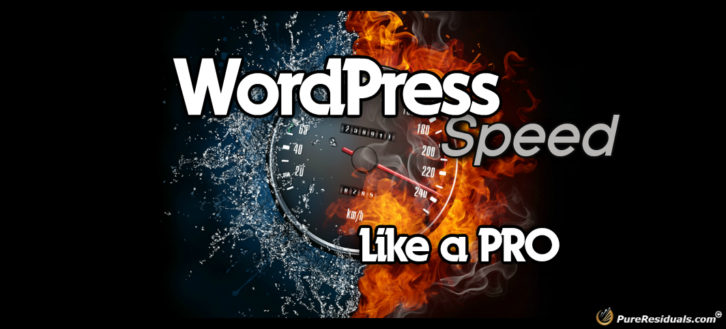10 Proven Principles to Hook Your Readers
Whether you’re using emails, blogs, landing pages, or newsletters, online marketing always comes down the same fundamental question:
How do we get folks to read our stuff?
It took some time, but marketers are finally starting to figure out that flashing colors and annoying popups tend to do more harm than good. But why? Don’t people like that kind of stuff? Aren’t TV commercials, not to mention certain movies, full of it?
The difference lies in what differentiates the internet from those other forms of engagement. If I watch a TV commercial, I didn’t choose to watch it. I agreed to watch it. You forced your ad on the air during the show I really want to watch, and I decided not to flip channels. So you darn well better have some pizazz or I’ll get bored and leave!
But online, it’s completely different. I chose to go online. I chose to visit your site. Now, the same flashy stuff that keeps my attention on TV actually annoys me, because I didn’t come here for all that rubbish. I came here to do something that I care about.
Whether we come to learn, or buy, or investigate, or compare – we come with a purpose. Online, we have a reason we’re visiting, and we don’t want to get the runaround.
The 10 Principles
With that foundation in mind, here are 10 proven ways to hook your readers so they stay on your site, read your email, and reach the call to action on your landing page.
- Write a Compelling Headline.
Why you should buy our product.
Wait, what? No, that’s an example of what NOT to do. A headline needs to do something – anything – to compel the reader to keep reading. Your headline should communicate a number of things. It should:
- Reassure them they’re in the right place
- Get them excited or interested in what’s ahead
- Give them at least one solid idea to grasp
If you search for lightbulbs, you want to end up on a site about lightbulbs. Your headline should therefore say something to reinforce this. A few pictures of lightbulbs helps too. But not all web writing situations are so clear in terms of graphics. Your headline needs to reassure the reader that this page has what they’re looking for.
But it also should get them excited. There are lots of ways to do this. Use a shocking stat, or present a problem, or touch their emotions. But give them something solid that will carry them through the rest of the article. Up to 50% of the effectiveness of an online article depends on the headline.
- Don’t sell them. Relate to them.
 Why was the pretend-headline above a bad one? Because it’s like a big banner in the sky telling the reader that all we care about is that you buy our product.
Why was the pretend-headline above a bad one? Because it’s like a big banner in the sky telling the reader that all we care about is that you buy our product.
Web readers don’t like this, because they might not have come here for that. They might just be price shopping. Or investigating what this product or service is. If they feel like you’re just selling them, and don’t care about their needs, they’ll bolt for another site that does care.
Thus, web articles and emails need to relate to the reader. Find a need, a concern, a story, an emotion – something that may relate to your product, but that primarily works to reassure the reader that yes, they are in the right place, and this site understands them.
- Don’t tell them about yourself.
There’s a reason most sites have an “About Us” page. That’s where you tell them about your grandfather who bought you your first chemistry set, how that eventually led you into science, and now you work for a disease research biotech firm.
But don’t say any of that on your other pages. Very few web visitors care about that.
They want what they came for. They don’t want to be “welcomed” and told how excited you are about your brand new website.
- Find an emotional hook.
 Notice how this article opened. Using an indent, the key question of the article is set apart in its own sentence. And it asks the very question that online marketers care about the most:
Notice how this article opened. Using an indent, the key question of the article is set apart in its own sentence. And it asks the very question that online marketers care about the most:
How can we get people to read our stuff?
If you’re a marketer, you care about this. This matters to you. There’s an inherent emotional interest behind it.
No matter what the blog or email or landing page is about, there is always some way to find an aspect of the product or service that affects people in a real emotional way. Find that, and use it to engage them.
- Know your audience.
It’s hard to find an emotional hook if you don’t know your audience. If a wildlife photographer finds this page somehow, will they be engaged by the opening question? Not likely.
But that’s okay. This article isn’t written to them. It’s written to you – the online marketer. So as the writer, I don’t care about the wildlife photographer. Her feelings mean nothing to me. But your feelings – that’s where it’s at.
If you’re ever bored reading an online article, it means one of two things:
- You are not the target audience for this page
- This page is badly written
Outcome 1 is okay. Outcome 2 means someone needs a new copywriter.
- No big paragraphs – fast read.
 Textbooks and novels can go on and on, and we don’t mind. But there’s something about the internet that just makes us want things fast. We wait two minutes at a traffic light and don’t care. We wait five seconds for a page to load, and we’re furious.
Textbooks and novels can go on and on, and we don’t mind. But there’s something about the internet that just makes us want things fast. We wait two minutes at a traffic light and don’t care. We wait five seconds for a page to load, and we’re furious.
So don’t burden your readers with huge blocks of text.
Some web pages have just one huge paragraph on the entire page. Guess what? No one – including you – wants to read that.
Break it up.
Small sentences.
Indents to make it feel active.
The same number of words can be read in one big chunk, or in five pages with small paragraphs.
The five-page one will take less time.
- Use subheads and bullet lists.
I know, I know. It seems like bullet lists are everywhere. Why? Same reason as Principle #6.
It takes less time to read.
Lists are just faster. It’s a category. The previous sentence told us something, and now this list has all the examples or details or features of whatever that sentence was about.
Likewise, subheads enable a reader to quickly scan your page. Maybe they don’t want to read the whole thing. Maybe they’ll look for just one section of interest. The subhead enables them to find that.
Look at this article again. (I know… this must be the best article you’ve ever read. It keeps citing itself). Suppose a reader engages with the headline because they want to learn ways to hook their readers, but they don’t want to read 1500 words to do so.
The subheads make that possible.
You could read all ten principles in a few seconds, stop at the three you haven’t heard before and read those sections, and then move on with your day.
- Use graphics – but use them well.
 Graphics serve the writing. They don’t define it.
Graphics serve the writing. They don’t define it.
This is an extremely common problem. A company puts up a website, lets a designer put everything in place, and then says, “Now let’s go get our content.”
Bad move. Words make sales. Arguments, reasons, emotions, trust, credibility. Graphics can serve these needs, but they can’t do it alone.
Split testing has shown that an email with a graphic can result in far higher click-throughs than one without any graphics. That is, all the text, the headline, everything else was the same. Just by putting a picture there, the click-throughs skyrocket.
So graphics are powerful. But graphics alone will not make a sale. Use them well.
- Tell a story.
Even an ironing board can be advertised with a story.
Remember when you were a kid, and you watched your grandmother ironing your dad’s shirts. She was working so hard, and he was sitting on his chair watching the game. But then she brought him all the ironed shirts, and he gave her a big hug and thanked her.
Later, he was out sweating his face off mowing the lawn, and your grandmother was sipping tea.
See? Now obviously that one needs some work. But didn’t you feel a little emotion from that silly story? Stories engage. They always have. But you do have to tell them well.
- It’s not the length. It’s the engagement.
 Is this article too long? Not if you’re reading this, because that means you read the whole thing.
Is this article too long? Not if you’re reading this, because that means you read the whole thing.
It’s a common myth that web readers want short articles. No. Web readers want to be engaged. Hook them, keep them interested, give them what they came for, address their emotions and needs – and they’ll read a 1500 word article.
You just did.
Category: Blogging
Tags: Blogging, Headlines, Writing Techniques, Blogging Techniques, Blogging How-To, Blogging Tips
Image Credits:
Photo by Nicole Honeywill on Unsplash
Photo by Ryoji Iwata on Unsplash
Photo by Amadeo Muslimović on Unsplash
Photo by Maarten van den Heuvel on Unsplash
Photo by Jordan Whitfield on Unsplash
Photo by Charles ???????? on Unsplash


![Mini-Course: How to start a blog that will actually make you money [Part 2]](https://scoop.offervault.com/wp-content/uploads/2016/10/How-To-Make-Money-Blogging.jpg)


One thought on “10 Proven Principles to Hook Your Readers”